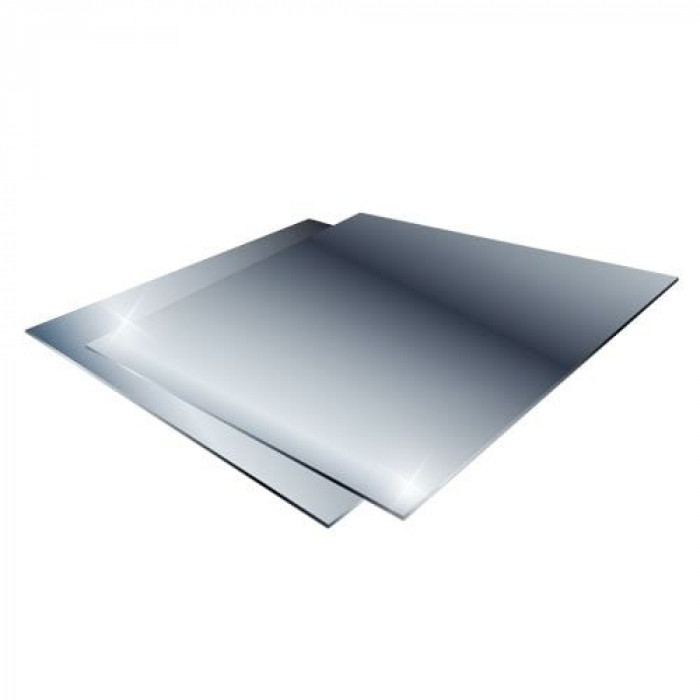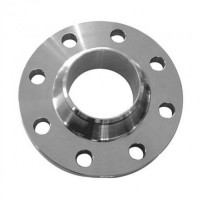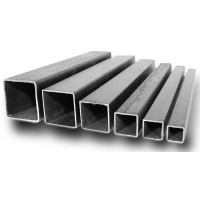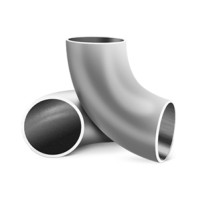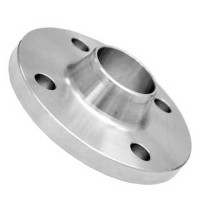Zviahel (Novograd-Volynsky) heat-resistant (heat-resistant) sheet, pipe, circle 20X23H18 (AISI 309, AISI 310), heat-resistant stainless steel strip, cutting and delivery, XH78T tape
Heat resistant steel sheet is a special material made of steel, which has heat resistance and corrosion resistance. It is used in metallurgy, chemical, oil and gas industries, in particular the production of engine parts, steam turbines, boilers and metallurgical furnaces, as it is not subject to deformation and damage at elevated temperatures.
Purpose
Stainless heat-resistant sheet can serve as the basis for the creation of industrial and household (for example, bath) stoves, combustion chambers, steam boilers. It is used for high pressure pipelines and steam pipelines.
This is a blank for motors, turbines, working surfaces of heating equipment, heavily loaded mechanisms. It also goes to a variety of designs for the space industry, the military and rocket industry.
It is actively used in construction, is necessary for equipping chemical and food enterprises, and is needed in mechanical engineering.
Properties
Without loss of high performance, it works in difficult climatic or temperature conditions, for example, at temperatures over 500 degrees Celsius.
It is a wear-resistant chemically inert material that does not rust. Sheets are durable, resistant to scratches and cracks. When heated, they do not emit toxic substances, they can be reused.
Release
Heat-resistant sheet in accordance with GOST is obtained by longitudinal rolling of the workpiece on the machine. For the alloy, the optimal combination of iron, chromium, nickel, titanium and other alloying components is selected. Distinguish between thin and thick sheets.
Heat-resistant alloys and steels are materials that operate at high temperatures for a given period of time under conditions of a complex stressed state and have sufficient resistance to corrosion in gaseous media.
Heat-resistant alloys and steels are materials that operate in an unloaded or lightly loaded state at elevated temperatures (more than 550 ° C) and are resistant to corrosion in gaseous media.
Active interest in such materials began to manifest itself in the late 30s of the XX century, when there was a need for materials capable of operating at sufficiently high temperatures. This is due to the development of jet aircraft and gas turbine engines.
The basis of heat-resistant and heat-resistant alloys can be nickel, cobalt, titanium, iron, copper, aluminum. Nickel alloys are the most widely used. They can be foundry, deformable and powder. The most common among heat-resistant alloys are nickel-based cast alloys capable of operating up to temperatures of 1050–1100 °C for hundreds and thousands of hours under high static and dynamic loads.
Main types
The most common are iron-based alloys. These are chromium, chromium-nickel, as well as chromium-manganese steels with molybdenum, titanium and tungsten additives. They also produce alloys with alloying elements such as aluminum, niobium, vanadium, boron, but in smaller quantities.
In most cases, the percentage of addition of additives to steel reaches from 15 to 50%.
The second, highly demanded group is nickel-based alloys. Chromium is used as an additive. The heat resistance is also increased by the addition of titanium, cerium, calcium, boron and elements similar in composition. In some technological complexes, alloys based on nickel with molybdenum are in demand.
The third group includes heat-resistant alloys based on cobalt. The alloying elements for them are carbon, tungsten, niobium, molybdenum.
Chemical composition
Determination of the chemical composition of heat-resistant materials is a complex process. It is necessary to take into account not only the main alloying elements, but also what enters the product as impurities or remains as a result of chemical reactions occurring during melting.
Specially added alloying elements are introduced to obtain the required technological, physical and mechanical properties. And impurities and chemical elements formed during melting can degrade the properties of a highly alloyed metal.
For chromium-nickel alloys and cobalt-based refractory materials, the presence of more than 0.005% sulfur, traces of tin, lead, antimony and other low-melting metals is dangerous.
Structure and properties
Heat resistance is determined not only by the chemical composition of the metals, but also by the form in which the impurities are in the alloy. For example, sulfur in the form of nickel sulfides lowers the melting point. And the same sulfur combined with zirconium, cerium, magnesium forms refractory structures. The purity of nickel or chromium has a great influence on heat resistance. However, it should be taken into account that the properties of the alloys vary depending on the technology used.
What affects heat resistance?
The heat resistant sheet contains chromium. The more it is, the higher the resistance to oxidation. Stainless steel does not corrode if the composition contains 13% or more chromium.
Titanium, niobium. Theydo not allow the development of intercrystalline corrosion.
Quenching and cooling in air or water. This improves the stainless steel's strength and impact resistance.
Classification of heat-resistant and heat-resistant alloys
Since we are talking about heat-resistant and heat-resistant steels and alloys, it is worth defining the terms heat resistance, heat resistance.
Terms and Definitions
Heat resistance - the ability of steels and alloys to withstand mechanical loads at high temperatures for a certain time. At temperatures up to 600°C, the term heat resistance is usually used. A more rigorous definition of heat resistance can be given.
Heat resistance is also understood as a stress that causes a given deformation, which does not lead to destruction, which a metal material in a structure can withstand at a certain temperature for a given period of time. If time and stress are taken into account, then the characteristic is called the limit of long-term strength; if time, stress and strain - creep limit.
Creep is a phenomenon of continuous deformation under the action of a constant stress. Long-term strength - the resistance of a material to destruction during prolonged exposure to temperature.
Heat resistance characterizes the resistance of metals and alloys to gas corrosion at high temperatures.
Classification
There are several classifications of alloys and steels that operate at elevated and high temperatures.
The most common is the following classification of heat-resistant and heat-resistant steels and alloys:
Heat-resistant steels - work in a loaded state at temperatures up to 600 ° C for a long time. An example is carbon, low alloy and chromium steels of the ferritic class.
Heat-resistant steels and alloys - work in a loaded state at high temperatures for a certain time and at the same time have sufficient heat resistance. Examples are austenitic grade steels on chromium-nickel or chromium-nickel-manganese bases with various alloying elements, and nickel- or cobalt-based alloys.
Heat-resistant (scale-resistant) steels and alloys - operate in an unloaded or lightly loaded state at temperatures above 550 ° C and are resistant to chemical destruction of the surface in gaseous media. Examples include martensitic chromium-silicon steels, austenitic chromium-nickel steels, ferritic chromium and chromium-aluminum steels, and chromium-nickel alloys.
There is also a classification according to the method of production:
foundry;
deformable.
Types of heat-resistant steel
Ferritic - has a low chromium content (no more than 17%). Possesses average indicators of corrosion resistance. Poorly processed.
Martensitic - has a low chromium content and medium carbon. Possesses mediocre plasticity.
Martensitic-ferritic - has the properties of a ferritic and martensitic metal, which is why it has received improved characteristics.
Austenitic - steel with a low carbon content, has non-magnetic properties, contains nickel. Resistant to corrosion at significant temperatures and deformations.
Varieties of heat-resistant and heat-resistant materials according to structural criteria
The state of the internal structure of metals determines the type of steels and alloys.
A number of categories of heat-resistant steel materials are distinguished based on the states of the internal structure.
Austenitic grade
The austenitic grade forms the internal structure due to the high percentage of chromium and nickel. Obtaining a stable austenite, a face-centered crystal lattice of iron, involves alloying the steel with nickel. Heat resistance is determined by chromium additives.
Austenitic alloys are highly alloyed. For alloying purposes, Nb (niobium) and (Ti) titanium are used to increase corrosion resistance. This characteristic allows them to be classified as stabilized. Corrosion-resistant heat-resistant steels belong to hard-to-cut metals.
When temperatures are raised to values close to 1000 degrees C. and maintained for a long time, austenitic stainless steel retains resistance to the formation of a layer of scale, maintaining the quality of heat-resistant materials.
Often found in the production of alloys of the austenitic type, belonging to the dispersion-hardening subclass. Qualitative characteristics can be improved by adding various elements: carbide, intermetallic hardeners.
These elements provide heat-strain strengthening due to precipitation hardening of the austenitic matrix.
Carbide-forming elements: vanadium-V, niobium-Nb, tungsten-W, molybdenum-Mo.
Intermetallics are obtained by additional additions of chromium-Cr, nickel-Ni, and titanium-Ti.
Applications
Various heat-resistant steel grades are operated in different ways, in many respects their purpose is determined by alloying components:
AISI 309 is suitable for the production of furnace and conveyor equipment fragments;
AISI 310used for the production of furnace conveyors, internal combustion engines and other combustion chambers, turbines, doors and motors;
AISI 310S is suitable for the manufacture of equipment used to transport gases at high temperatures - these can be exhaust gas systems, gas pipelines or turbines;
AISI 314 is used in the production of furnaces due to its maximum refractory properties.
Features of materials with heat-resistant properties
Heat-resistant steels and alloys, as mentioned above, are able to successfully operate under conditions of constant exposure to high temperatures, while not showing a tendency to creep. The essence of this negative process, which ordinary grades of steel and other metals are subject to, is that the material, which is affected by a constant temperature and constant load, begins to slowly deform, or creep.
Creep, which they try to avoid when creating heat-resistant steels and other types of metals, is of two types:
long;
short-term.
To determine the creep of alloys in research centers, a set of testing machines is used.
To determine the parameters of short-term creep, materials are subjected to special tests, for which they are placed in a furnace heated to a certain temperature, and a tensile load is applied to them. This test is carried out for a limited period of time.
It will not be possible to check the material for its tendency to long-term creep and determine such an important parameter as the creep limit in a short period of time. To do this, the product under test placed in the oven must be subjected to a long-term load. The importance of such an indicator as the creep limit of a material lies in the fact that it characterizes the highest stress that leads to the destruction of a heated product after exposure for a certain period of time.
Advantages, disadvantages of heat-resistant and heat-resistant alloys
Advantages:
have high heat resistance;
have good heat resistance.
Flaws:
alloys containing chromium and especially nickel have a high cost;
having a large number of different components in its composition, it is rather laborious in production.
The most popular heat-resistant alloys
Austenitic heat-resistant alloys have become the most demanded materials at the moment in this segment of steelmaking. Their structure is created with the help of nickel, and heat-resistant qualities are provided by the presence of chromium. Such austenitic grades resist the appearance of scale well at temperatures not exceeding a thousand degrees.
In the manufacture of this alloy, two types of sealant are used: intermetallic or carbide. It is these seals that provide austenitic steel with special properties that are so in demand in various modern industries.
The most popular and relevant alloys are divided into two groups:
precipitation hardening (grades X12N20T3R, 0X14N28V3T3YuR, 4X14H14V2M, 4X12N8G8MFB - this steel is the most suitable material for the manufacture of turbine parts and engine valves);
homogeneous (grades Х25Н20C2, 1Х14Н16Б, Х23Н18, Х25Н16Г7АР, Х18Н10T, 1Х14Н18В2Б, Х18Н12T - these grades are used for the production of pipes and fittings that will work under heavy loads).
Austenitic-ferritic steels, due to their alloy with a stable structure, exhibit rather high heat resistance. Such grades, due to their brittleness, cannot be used for the production of loaded parts, but these alloys perform well at temperatures reaching up to 1150 ° C.
No questions about this product, be the first and ask your question.

